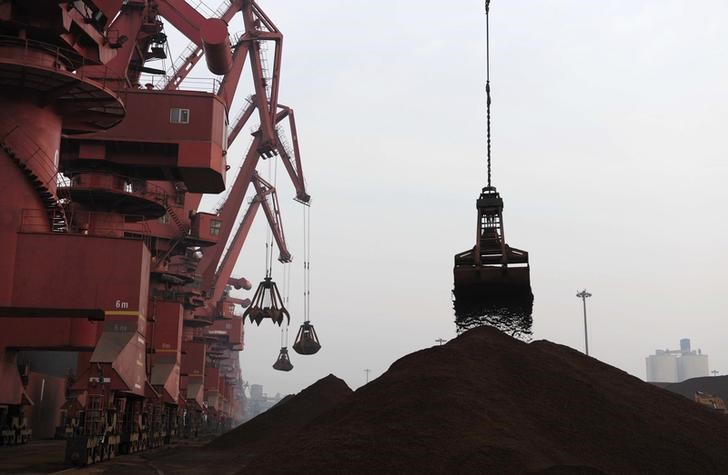By Susan Taylor
MONTREAL, May 31 (Reuters) - An Australian mining veteran
who made investors billions with a shrewd bet on coal in
Mozambique is aiming for another big score with Canadian iron
ore, even as a global gush of new supply threatens to depress
already slumping prices.
Champion Iron CIA.AX CIA.TO Chief Executive Michael
O'Keeffe is laying the groundwork to restart Bloom Lake mine in
northern Quebec's metals-rich Labrador Trough.
Champion bought Bloom Lake last year for only C$10.5 million
($8.04 million) after Cliffs Natural Resources CLF.N , which
paid $4.9 billion for it in 2011, put the unprofitable mine into
creditor protection.
Champion will have its work cut out. The spot iron ore price
.IO62-CNO=MB is sputtering at $51 a tonne, down from an
all-time high of about $190 in 2011, as an already oversupplied
market absorbs ore from new mega-mines.
Best known for turning Riversdale Mining from a coal
explorer in Mozambique with a market cap of A$7 million ($5
million) into a producer that Rio Tinto (LON:RIO) RIO.AX acquired for
nearly A$4 billion in 2011, O'Keeffe says he's "measured and
controlled" - anything but a gambler.
"I pride myself on being able to pick the bottom," he said
in an interview with Reuters.
Rio, however, wrote off its investment in Riversdale a few
years later and fired its CEO over the failed venture.
O'Keeffe, who moved his family to Montreal, doesn't see the
market recovering quickly. That gives Champion the time to
develop mine and processing plans, he said, that will reduce
costs and boost annual production to 7.5 million tonnes from 6
million tonnes.
Pilot studies have already shown new processing equipment
could help boost recovery rates to 80 percent from about 70
percent when the mine last operated, he added.
The timing and pace of any restart will likely be decided at
year-end, he said, a call that boils down to costs.
NOT TIME FOR NEW MINES
There are few companies anywhere making concrete plans to
start producing iron ore.
"Now is not the time to start new mines. Now is the time to
work what is already up harder," said Nev Power, chief executive
of Fortescue Metals FMG.AX , the world's No. 4 producer.
The "Big Three" - Rio, BHP Billiton BHP.AX BLT.L and
Vale VALE5.SA - have been slashing costs to squeeze out
higher-cost rivals.
Separately, Australia's 55-million-tonne Roy Hill mine,
combined with Vale's development of a 90-million-tonne
expansion, S11D, in Brazil, may add more than 10 percent to the
global sea-borne iron ore supply, said Clarksons Platou
Securities analyst Jeremy Sussman.
"In order to balance the market, we'll need to see high-cost
production come offline. And that's going to be painful," he
said.
Iron ore from the remote Labrador Trough gets a premium for
its high 66 percent concentration, versus the 62 percent
standard, but is disadvantaged by its distance from the Chinese
market.
Australia's government forecasts a price of $55 per tonne
next year, so "what we have to then ensure, is that our costs of
delivering to China are below $55," O'Keeffe said.
That's far from Bloom Lake's 2014 cash production cost of
$81 and the largest miners' current cost of about $30 a tonne.
"They're going to have their hands full," said Clarksons'
Sussman, noting that Bloom Lake was in the top quartile for
costs.
O'Keeffe said company spending has been cut "significantly"
and the mine is now free from costly rail and port access
agreements. It could also benefit from planned government
investments in that infrastructure.
Sandy Chim, the chief executive of neighboring miner Century
Iron 9958.TW , said O'Keeffe is "brave" to bet on an uncertain
market.
"It is courageous to put it forward," Chim said. "I like to
see people take the first move in a particular area that we're
in. It would be good to have somebody being a catalyst."
($1 = 1.3066 Canadian dollars)
($1 = 1.3922 Australian dollars)
(With additional reporting by Jim Regan in Sydney; Editing by
Paul Simao)
